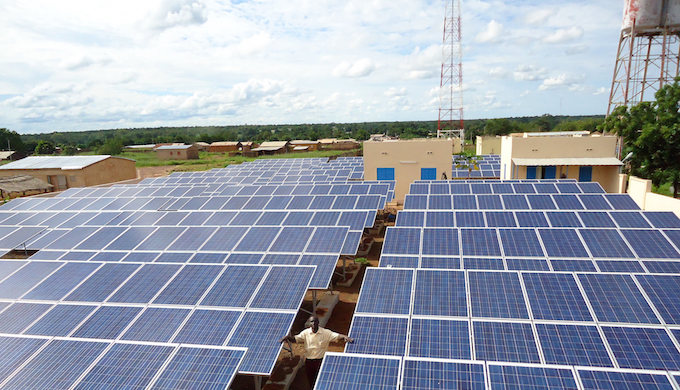Decentralised renewable energy, which can provide an alternate, reliable source of power to underserved communities, needs policy and credit support

Mini-grids are emerging as an useful option in rural areas (Photo by IRENA)
Decentralised renewable energy (DRE) made its presence felt when mini-grids in north Bihar played a significant role in this year’s relief operations when the entire region went under a devastating flood. Small energy companies such as Tara Urja and DESI Power that operate micro-grids in the state emerged as champions in disaster relief and shone a light on the benefits of decentralised power generation.
See Green mini-grids support disaster relief during Bihar floods
Although Tara Urja and DESI Power helped increase resilience during an emergency, it is not their primary role. An increasing number of such small enterprises are providing an alternate source of reliable energy in rural areas where grid supply is sporadic and uncertain.
The DRE sector has shown some growth in recent times and has deployed 206 small energy grids in various parts of the country, according to the State of the Sector released in New Delhi on October 5. The first report of its kind, it has been prepared by the Clean Energy Access Network (CLEAN), an industry grouping that has 104 members, including 69 last-mile energy delivery micro-, small and medium-sized enterprises.
The DRE sector has also installed more than 92,000 solar home systems (SHS), over 120,000 clean household cookstoves and 3.6 million solar lanterns, the report said. Beyond household electricity needs, 144 other uses such as agricultural processing, small-scale manufacturing, ICT, cold storage and so on have been powered by DRE.
The sector however faces strong headwinds because of both government policies and market realities. Although India is fast growing its renewables sector, the emphasis is primarily on centralised grid-based access and LPG supply. As a result, DRE is somewhat neglected and warrants a change in the government’s position on DRE solutions, the report says.
“To view them as longer-term solutions that can complement other approaches to energy provision and unlock capital for the sector, there is a need for a concerted effort to shift the narrative about the role and value-add of the DRE sector,” the report maintains.
Credit challenges
Raising credit is the other major challenge that the DRE sector faces in India. The small enterprises that comprise the sector are facing difficulties in their attempts to access financing due to high interest rates and collateral requirements. This is compounded by the fact that many of these firms are unable to show proof of a strong track record on operations and financial processes combined. They also have weak business plans, which make bankers reluctant to lend to them, the report points out.
“There have been examples of efforts to use credit guarantees to enable end-user financing for energy from banks and financial institutions,” the report says. “It is worth exploring if similar mechanisms and interest subsidy provisions could reduce bank risk, unlock commercial debt and begin to help build a credit history for DRE enterprises as a whole.”
The problem of capital has its effect on long-term debt as well. “No enterprise would be able to build a strong business, undertake innovation and expand into unserved regions without access to long-term debt,” the report says. In this circumstance, policy certainty plays a vital role. The report says that in the past, sudden withdrawal and modification of schemes and introduction of new ones without adequate consultations have been serious issues. “Without a policy level certainty and recognition of the sector and involvement of key energy agencies, financiers will continue to be hesitant about treating decentralised clean energy provision as rural infrastructure and providing it the terms and conditions that accrue to rural infrastructure projects,” it argues.
The DRE report also makes a strong point on subsidies. The industry lobby group seeks creation of a level playing field by removing or phasing out subsidies on kerosene and grid extension. This would help ensure better comparison of alternate energy options for an end-user.
It is encouraging that the spurt in DRE has been achieved largely in the private sector. “Private sector delivery of distributed energy access, given adequate public partnership, can help India achieve quality, reliable energy access faster, while ensuring rural economic development, energy security, and climate resilience,” Surabhi Rajagopal, the report’s author, said in a statement.
“India has the ability to not only scale decentralised solutions for itself, but for the global community as it seeks to achieve Sustainable Development Goal 7 (SDG7),” said CLEAN’s chief operating officer Harihara Mohapatra. SDG7 seeks to ensure access to affordable, reliable, sustainable and modern energy for all.
